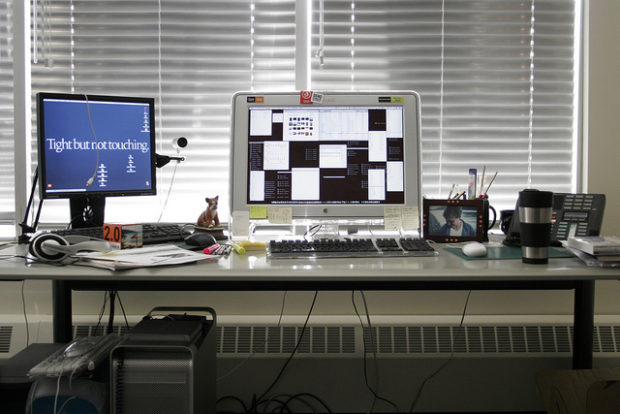FlexJobs: Where We Were and Where We’re Going

The following is a guest post By Brie Weiler Reynolds, FlexJobs Senior Career Specialist
10 years. That’s quite a long time when measured in Internet years. And it’s a long time when looking at the job market. To celebrate our 10th anniversary this January, FlexJobs has taken a look at where the flexible job market stood in 2007 when our company was founded, where flexible jobs are now, and where we see them going in 2017 and beyond.

In 2007, the first inklings of the Great Recession were stirring, the first generation of the iPhone was released, and flexible jobs (like those that allow telecommuting, flexible hours, and part-time schedules for professionals) were still very much seen as a perk rather than a standard way of working. And Sara Sutton Fell had just founded FlexJobs–the first job search website of its kind–dedicated to listing pre-screened, professional-level telecommuting and flexible jobs.
At the time, there were (and still are!) millions of people out there looking for different types of job situations, especially flexible jobs. People like working parents, retirees, millennials, entrepreneurs, caregivers, digital nomads, people with disabilities, military spouses, students, environmentalists, and more. The thing that brought, and continues to bring, these folks together is the understanding that life is flexible, and their jobs need to be, too.
The Growth in Flexible Jobs from 2007 to 2017
Whether you’ve been in the labor force for decades or just a couple years, you’ve probably noticed some pretty large shifts in terms of when, where, and how we work–in just the last few years alone. More companies than ever are embracing flexible work options, allowing employees to work remotely, and openly touting the strategic and business benefits of flexible jobs.
But if you look back further, you’ll see just how dramatically things have changed when it comes to work flexibility. Here’s an overview of the growth of flexible work options over the last 10 years.
In 2007 in the U.S, the Bureau of Labor Statistics reported…
-
9 percent of employed people worked from home occasionally
-
7 percent freelanced
-
25 percent had flexible schedules
Today, by contrast…
-
38 percent of people work from home occasionally
-
34 percent freelance
-
64 percent say their employers will accommodate flexible work schedules

Want a Flexible Job? Here’s Where They Are
If you’ve figured out that flexible work options could provide a big benefit to your own life, there’s never been a better time to seek flexible jobs. But what’s out there–what can you expect as a flexible job seeker?
The most popular flexible job categories since FlexJobs’ launch in 2007 have consistently been medical and health, computer/IT, customer service, administrative, and education and training.
Five job categories that have seen large growth in all types of flexible job listings in the past year are
-
government & politics
-
engineering
-
project management
-
communications
-
travel & hospitality
And five categories with large growth in remote job listings in particular are
-
mortgage and real estate
-
HR and recruiting
-
accounting and finance
-
pharmaceutical
-
education and training
Trends in the Flexible Job Market: 2017 and Beyond
As you know, things are still changing in terms of when, where, and how we work. So it’s important to keep track of trending shifts within the flexible market.
Digital Nomads: In 2016, digital nomads started coming out of the woodwork, sharing their tips and advice for working remotely, traveling and living around the world, and finding flexible jobs. Companies like Surf Office, Remote Year, Hacker Paradise, and Outsite are growing in popularity for helping people live the digital nomad lifestyle.
Reduced and More Flexible Hours: Sixty-three percent of workers say they expect that the standard eight-hour workday will be obsolete. If you think about it, most people already don’t adhere to the standard eight-hour workday. With the widespread availability of high-speed Internet, people’s ability to work whenever and wherever has already moved well beyond the traditional 9-to-5 office schedule.

The Gig Economy
The Gig Economy: Over the last decade, the number of people doing freelance and contract work has risen by almost 10 million people, as reported by the New York Times. In fact, temporary and freelance jobs have risen faster than overall employment. Which means there was actually a decline in the number of workers with conventional jobs from 2005-2015.
Back in the late 2000’s, you might have been easily forgiven for thinking flexible work options were just a trend. But even with some ups and downs over the last 10 years, flexible work options have trended upward, and we’re convinced they’ll continue to do so. After all, it’s a win-win situation for professionals and companies alike, and we haven’t even mentioned the fantastic environmental and community benefits!
So, if you’re in the market for a flexible job, it’s never been a better time to find a job that fits your life.
.
Image credits.




